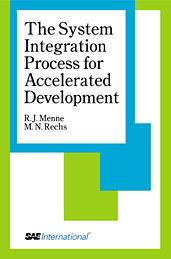Video

Real-time Tire Imbalance Detection Using ABS Wheel Speed Sensors
2011-11-15
This presentation proposes an approach to use ABS wheel speed sensor signals together with other vehicle state information from a brake control module to detect an unbalanced tire or tires in real-time. The proposed approach consists of two-stage algorithms that mix a qualitative method using band-pass filtering with a quantitative parameter identification using conditional least squares. This two-stage approach can improve the robustness of tire imbalance or imbalances. The proposed approach is verified through vehicle testing and the test results show the effectiveness of the approach. Presenter Jianbo Lu, Ford Motor Co.

